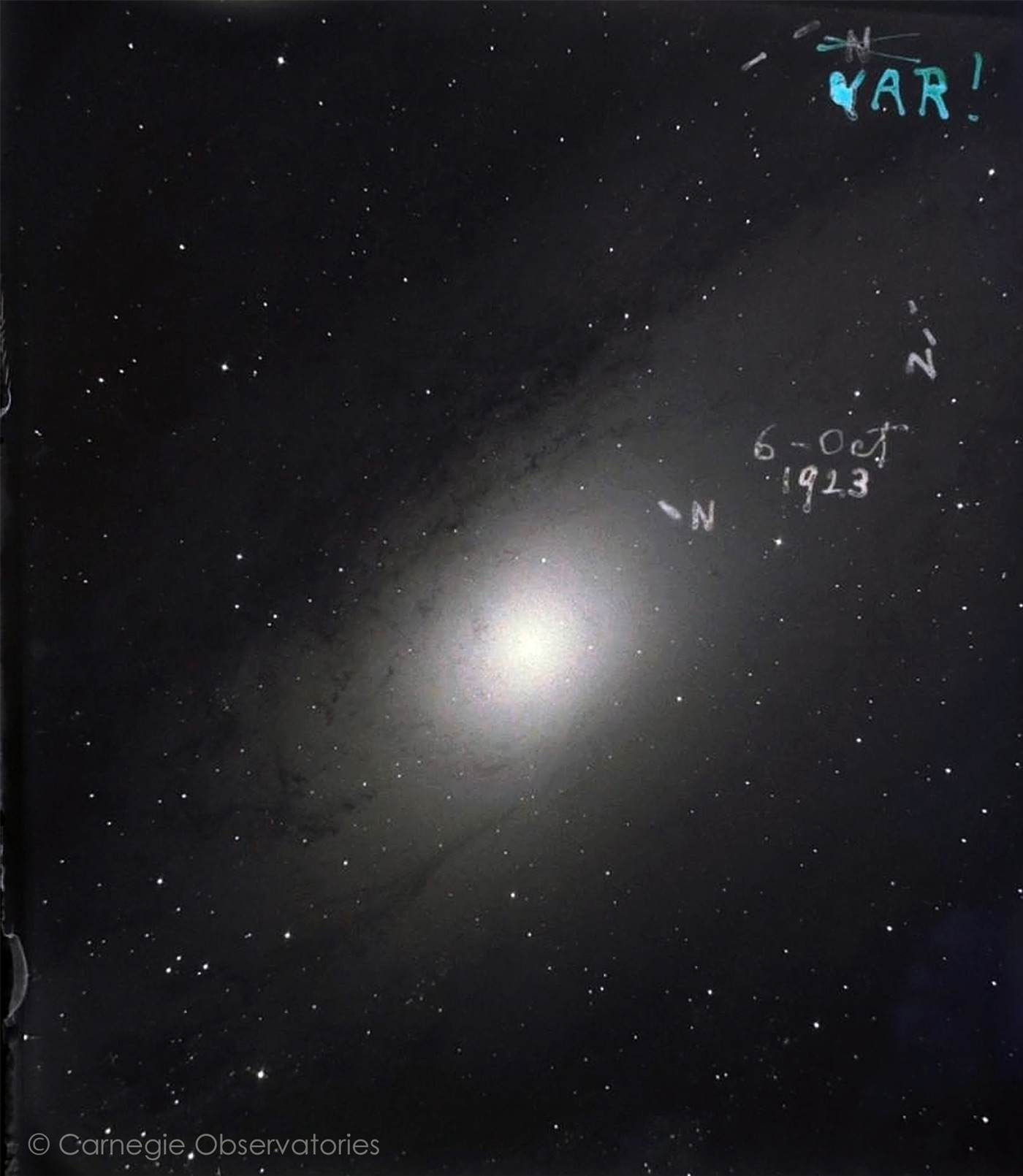
Anyone with even a modest command of astronomy knows that the universe is expanding. But it never expanded so much as it did a century ago.
It all began with a small, public event held on April 26, 1920 in Washington, D.C., sponsored by the National Academy of Sciences. Today, it’s known as The Great Debate.
Picture our knowledge of the cosmos at that time. If you were taking an astronomy course, you wouldn’t have confronted exam questions about galaxies, because the only galaxy we knew was the eponymous Milky Way. It was the entire universe, the whole cosmic caboodle. You wouldn’t have been asked to write an essay on the Big Bang either. At the time, most folks would have thought that two-word term was a reference to a heavy WW I artillery piece.
But three years later, everything changed. In the space of a thousand days, our concept of the cosmos was revamped to a degree not seen since the time of Copernicus.
The impetus for this astronomical revolution may seem unimpressive; it was an argument about some fuzzy smudges seen on deep sky photos. The blotches had a clam-shell shape, but what were they? Clumps of gas peppering the Milky Way? Embryonic planetary systems? Or were they other Milky Ways – other galaxies or, in the terminology of the time, other universes?
The answer hinged on a better knowledge of two quantities: (1) The size of the Milky Way, and (2) the distance to one or more of these smudges. Obviously, if the fuzzy blotches were at a distance less than the diameter of the Milky Way, one could safely say they were part of it.
Opinions differed on both of these numbers. Since controversy is always good at filling an auditorium, the National Academy of Sciences scheduled a debate (which was, in fact, simply two back-to-back lectures) pitting the Lick Observatory’s Heber Curtis against the Mt. Wilson astronomer Harlow Shapley. It was northern vs southern California.
Points of view
The contention of Shapley was that astronomers had massively underestimated the size of the Milky Way – and that it was ten times greater in diameter than the accepted value at the time (30,000 light-years.) Believing that the smudges could surely not be farther than 300,000 light-years away, Shapley argued that they were part and parcel of the Milky Way.
Curtis on the other hand thought that the fuzzy clam shells were in fact other “island universes” – galaxies far beyond the familiar tracts of our own.
You might wonder why this was such a puzzle. You probably have little difficulty recognizing a galaxy when you see it. But harken back to those days of yesteryear when telescopes were small and when astronomical photography was still relatively unsophisticated. Any astronomical plate would have been crowded with stars, and the occasional smudges would have been mostly tiny. It couldn’t have been easy to believe that all those stars were a thousand times closer than the smudges.
The key, of course, was to know the distances. But measuring the remoteness of objects that are more than a few hundred light-years distant isn’t easy. The simple geometric schemes pioneered two millennia ago by some clever Greeks don’t work once you try them on objects beyond our local stellar neighborhood. You’d need to measure angles with impossible precision. Instead, some other scheme for gauging distance was required. So Curtis and Shapley offered up their favorites, such as the angular size of the smudges, to provide clues to how far away they were.
On the evening of April 26, the two astronomers spent a little over an hour disputing the scale of the universe. But there was no declared “winner.” The best telescopic observations were not adequate to decide about the smudges.
Enter the decider
However, new data soon appeared. In October, 1923 Edwin Hubble used the recently completed 100-inch Hooker Telescope on Mt. Wilson to make some high-resolution photos of the Andromeda nebula, a large smudge in the winter sky. In a truly eureka moment, he found some conspicuous variable stars in it, ones that periodically dim and brighten.

That was the key. Henrietta Levitt, one of the few women working in astronomy at the time, had studied these types of stars, and shown that the cadence of the variations was directly tied to the stars’ intrinsic brightness. Hubble soon pegged the distance to the nebula at 860,000 light-years. His number was somewhat less than the truth, but was still far beyond the limits of the Milky Way advocated by Shapley or anyone else.
Hubble’s work was revolutionary. Andromeda was another galaxy, another “universe.” And so were all the other clam-shell smudges. The visible universe extended a hundred thousand times farther than the most distant pickets of the Milky Way. And the space between them was expanding, a swelling that began 13 billion years ago with the Big Bang.
It all seems obvious now, and only astronomy aficionados are likely to throw virtual parties to commemorate the 100thanniversary of The Great Debate. But there’s a possibility that you could live to see another dramatic enlargement of the cosmos. You may have heard the suggestion that our universe is but one of many, and that the Big Bang was not unique. There might be enormous numbers of parallel universes that we can’t see, but that nonetheless exist.
The press release for The Great Debate was titled “How many universes are there?” That seemingly quaint question is clearly relevant again. If we learn that parallel universes are a demonstrable fact and not just an intriguing idea, then we will once again be witness to a great expansion of our cosmic horizons. Prepare to be humbled.





